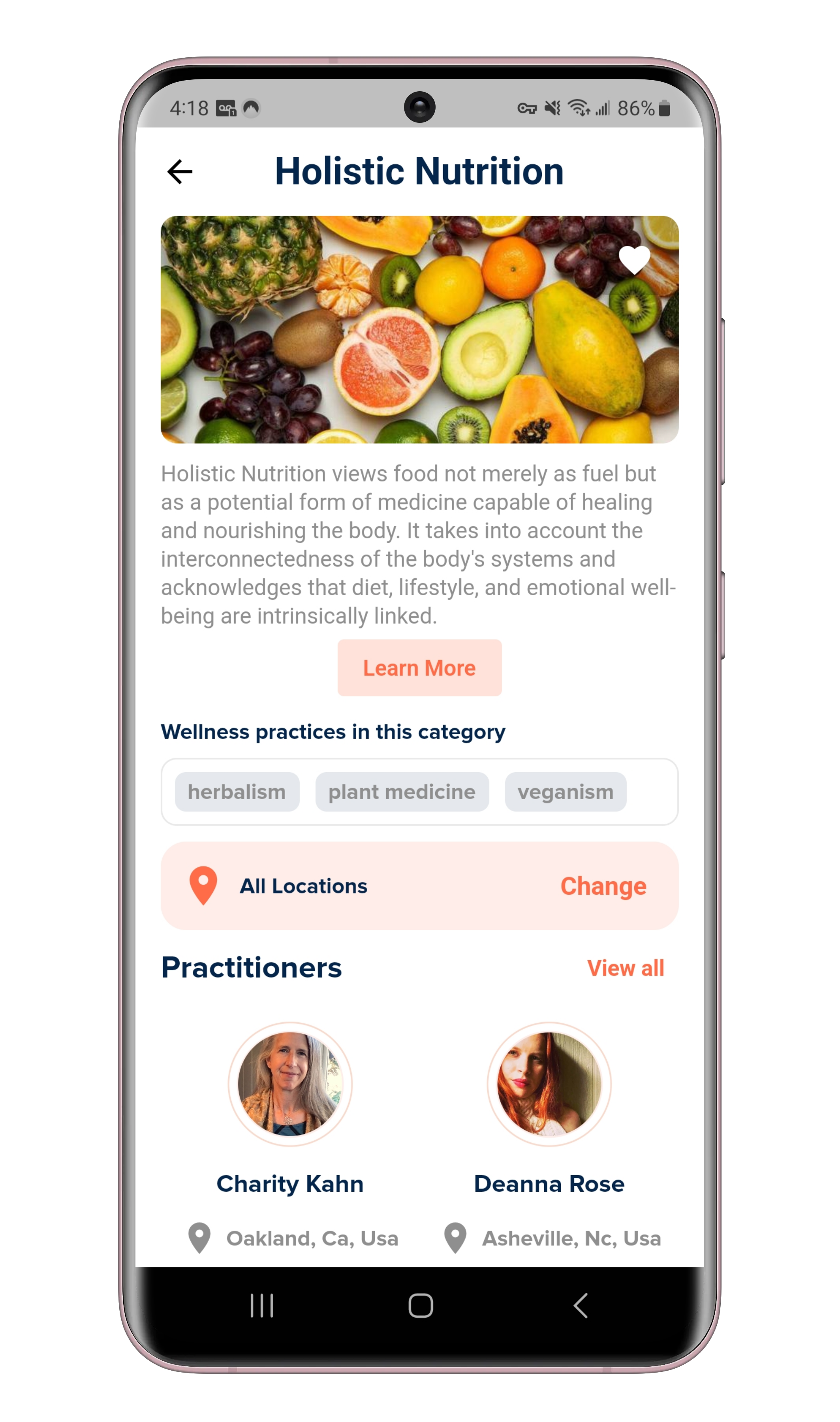Breathwork
Breathwork is the practice of conscious, controlled breathing aimed at influencing an individual's mental, emotional, or physical state. It involves a series of rhythmic breathing exercises to guide the breath’s pace, depth, and flow.
Choosing to explore the healing potential of breathwork is a significant step towards heightened well-being in your body, mind, and spirit. Make your journey smoother and more enjoyable with Healers & Teachers app
Healers & Teachers connects you with Breathwork practitioners in just a few taps
What is Breathwork?
Breathwork is the practice of conscious, controlled breathing aimed at influencing an individual's mental, emotional, or physical state. It involves a series of rhythmic breathing exercises to guide the breath’s pace, depth, and flow. This practice aids in the cultivation of self-awareness and promotes inner peace, providing an avenue for individuals to explore their emotional depths and achieve spiritual enlightenment.
Benefits and Uses of Breathwork
Breathwork offers a multitude of mental, emotional, and physical benefits. These include stress reduction, improved concentration and focus, emotional healing, spiritual growth, increased energy levels, and enhanced immune response. It's employed in various settings, including individual sessions, group workshops, wellness retreats, and online platforms. Practitioners include psychologists, therapists, life coaches, yoga instructors, and wellness consultants who guide individuals through personalized breathwork journeys.
Types of Breathwork Practices
As the practice of breathwork has grown in popularity, various methods have emerged, each offering unique techniques and benefits. While some practices focus on physical health and relaxation, others delve deeper into emotional healing and spiritual growth. This guide will explore some prevalent types of breathwork in today's wellness practices.
Holotropic Breathwork
What it is: Developed by psychiatrists Stanislav Grof and Christina Grof in the 1970s, Holotropic Breathwork encourages faster, deeper breathing to facilitate emotional release and personal growth. The sessions often involve music and are conducted in groups, with each participant having a "sitter" to provide emotional support.
Benefits: This type of breathwork can promote deep emotional healing, personal transformation, and spiritual growth. It can also help individuals gain insights into their subconscious mind, helping resolve traumatic experiences and promoting overall mental well-being.
Applications: Holotropic Breathwork is typically done in a controlled setting under a trained facilitator's guidance. It is often used as a therapeutic tool in psychological healing and personal development programs.
Rebirthing Breathwork (Conscious Energy Breathing)
What it is: Rebirthing Breathwork, developed by Leonard Orr in the 1970s, involves a connected and relaxed inhale and exhale pattern. It is also known as Conscious Energy Breathing and can be performed lying down, sitting, or in water.
Benefits: Rebirthing Breathwork can help release emotional energy tied to past traumas, including birth experiences. It can also improve physical well-being, promote relaxation, and foster feelings of unity and connectedness.
Applications: Rebirthing Breathwork is commonly used in individual or group therapy sessions for trauma healing, stress management, and spiritual development. It's beneficial for those aiming to release stored emotions and work through past traumatic experiences.
Pranayama
What it is: Pranayama is an ancient yogic practice that involves various breathing techniques to balance energy and prepare the mind for meditation. The term "Pranayama" comes from the Sanskrit words "prana" (life force) and "yama" (control).
Benefits: Regular practice can improve respiratory function, enhance concentration, promote relaxation, and balance energy levels. It also aids in stress management and preparation for deeper meditative states.
Applications: Pranayama is often incorporated into yoga classes and can be practiced independently at home as part of a daily wellness routine. It's an excellent choice for individuals seeking a holistic practice that promotes physical, mental, and spiritual well-being.
Choosing the Right Practice
The choice of breathwork depends on an individual's specific needs and goals. Those seeking deep emotional healing may opt for Holotropic or Rebirthing Breathwork, while individuals interested in improving concentration or respiratory function may prefer Pranayama. It's always a good idea to research different techniques, consider personal wellness objectives, and consult with a certified practitioner before starting a new practice. No matter the chosen method, breathwork offers a practical and accessible tool to improve well-being and promote a healthier, more balanced life.
Understanding the Risks and Responsibilities in Breathwork Practices
While breathwork carries numerous benefits, it's essential to be aware of potential risks and precautions to ensure a safe and effective practice. Moreover, the role of a breathwork teacher or facilitator is crucial in guiding, supporting, and maintaining the safety of the practitioner.
Potential Risks of Breathwork
Breathwork involves manipulating the breath, which can profoundly affect the body and mind. However, certain risks and side effects can occur, particularly when the practices are not performed correctly:
Physical Discomfort: Rapid and deep breathing can lead to dizziness, lightheadedness, or tingling sensations in the hands and feet.
Emotional Distress: Breathwork can bring up suppressed emotions and memories, causing temporary psychological discomfort.
Respiratory Imbalances: Excessive deep breathing can disrupt the balance of oxygen and carbon dioxide in the body, leading to a state known as respiratory alkalosis.
Underlying Health Conditions: Individuals with certain health conditions, including cardiovascular disease, respiratory disorders, high blood pressure, and severe mental health conditions, might be at higher risk.
It's essential to approach breathwork with awareness and under the guidance of a trained professional, especially if you're new to the practice or have any health conditions.
Navigating Breathwork Safely
Here are some guidelines to ensure a safe breathwork experience:
Get Professional Guidance: It's advisable to begin your breathwork journey with a certified teacher or facilitator. They can provide appropriate techniques, manage the intensity of your practice, and monitor your safety.
Start Gradually: Begin with gentler forms of breathwork before diving into more intense practices. This gradual approach can help your body and mind adjust to the new experience.
Listen to Your Body: Breathwork should never cause significant discomfort or pain. If you feel unwell during a practice, it's crucial to stop and seek professional advice.
Communicate: Be open with your breathwork teacher about your experiences and any concerns. Your feedback can help them adjust your practice and provide necessary support.
The Role of a Breathwork Teacher
A breathwork teacher plays a vital role in providing a safe and effective breathwork practice:
Guidance: They guide you through the process, providing clear instructions and modifications as needed.
Support: They offer emotional support, particularly during intense practices that might bring up challenging emotions.
Safety: They monitor your well-being during the practice, ensuring you're safe and comfortable.
Knowledge: They impart knowledge about different techniques, the benefits, risks, and the theory behind breathwork.
Personalization: A breathwork teacher can tailor practices to your needs, goals, and current state of health, making the experience more effective and meaningful.
While breathwork is a powerful tool for holistic wellness, it's crucial to approach it responsibly. Understanding the risks, taking appropriate precautions, and working with a qualified teacher can significantly enhance your breathwork journey's safety and efficacy.
Healing and Growth begins with you
Remember, the journey towards holistic health and wellness is a personal one, and it can be comforting and reassuring to know you're not alone. With the Healers & Teachers app, you'll have a wealth of resources and a supportive community right at your fingertips, ready to assist you every step of the way.
The Healers & Teachers app offers:
Skilled Breathwork Facilitators: Connect with certified breathwork facilitators who specialize in various breathwork styles and practices. Receive personalized guidance and adapted techniques to boost relaxation, emotional release, and mindfulness.
Extensive Practices and Programs: Dive into a diverse selection of breathwork practices, including Holotropic Breathwork, Rebirthing Breathwork, and Pranayama. Uncover programs for stress relief, emotional healing, and spiritual development. Access guided sessions tailored to various experience levels and specific objectives.
Thriving Community: Engage with a vibrant community of breathwork enthusiasts embarking on a shared wellness journey. Connect, share experiences, seek advice, and learn from the collective wisdom and support of fellow practitioners.










